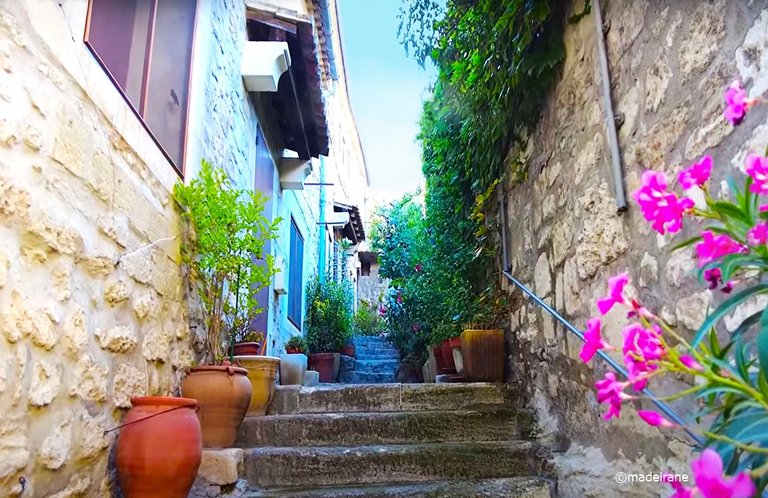
Provence charmed me with many things, including its towns and villages growing in the rocks. One of those towns is Les Baux de Provence, or, for short, Les Baux, located 32 km south of Avignon.
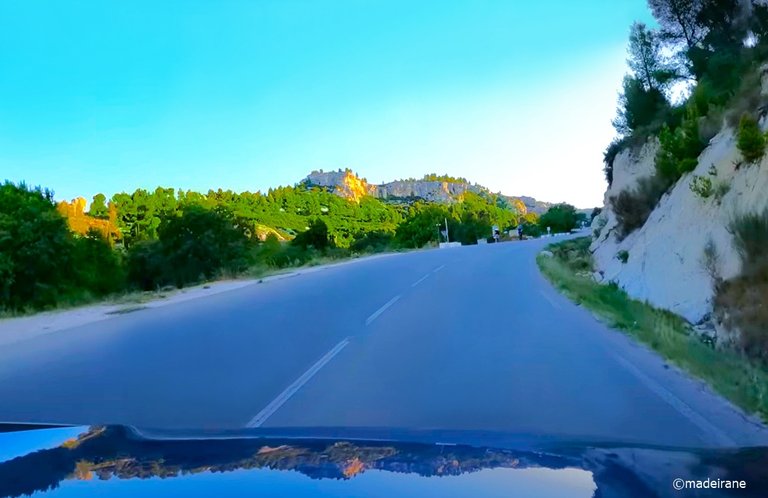
And although I knew very well that Les Baux de Provence is essentially a "dead" geographical point on the map of France, actively exploited in the tourist business, I entered this place into the travel program without thinking.

In Les Baux de Provence, my husband and I were attracted by the interesting story of this medieval ghost town, the brutal ruins of its citadel and, of course, nature - a carelessly thrown belt of white rocks of a bizarre shape, breaking through a plush carpet of greenery. Their unusual, mesmerizing shape was created by a sculptor named erosion about a thousand years ago.
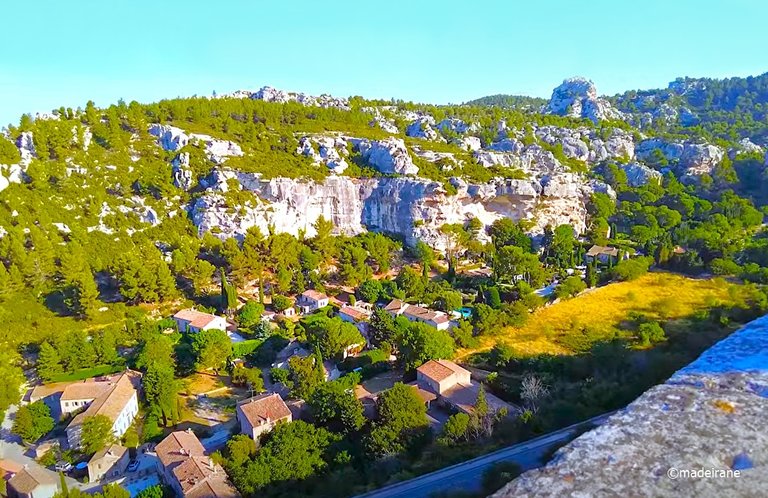
Like all medieval cities in this region, the city was founded after the construction of a castle on the mountain. And the castle itself was founded much earlier than 981, but it was precisely this year that its first mention in official documents dates back to. A fortress-legend, erected in the 11th century on a narrow strip of land for the local feudal lord, des Baux, proudly rises above this limestone rock ridge.
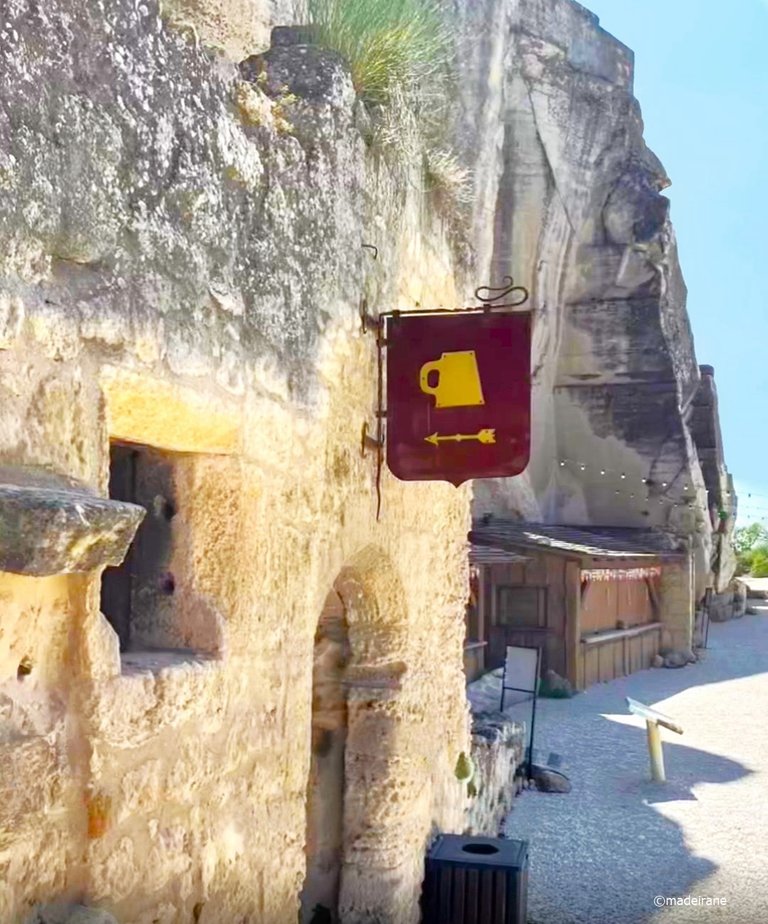
Flags with the coat of arms of the de Bo dynasty - 16 white stars on a red field - testified that my husband and I did not make a mistake in the address. The star is a hint of their pedigree, which they modestly and tastefully led from Balthazar himself - one of the magicians who came to worship the infant Jesus.

Today, the city of Les Baux de Provence and Le Baux castle are one of the main attractions of these places. And it is a very popular place among tourists. We realized this when we first approached the city.
As for all those who come to Les Baux de Provence by car, the question of parking was relevant for us. Parking is charged at a single daily rate. Separate free parking is provided for drivers with disabilities. Keep in mind that the parking machine does not accept banknotes: it works only with coins and bank cards.

Les Baux is called a ghost town. In fact, we all come to the dead city, to an open-air museum, equipped with shops and stalls with edible and inedible souvenirs, cafés, restaurants and other trade and service elements for tourists.
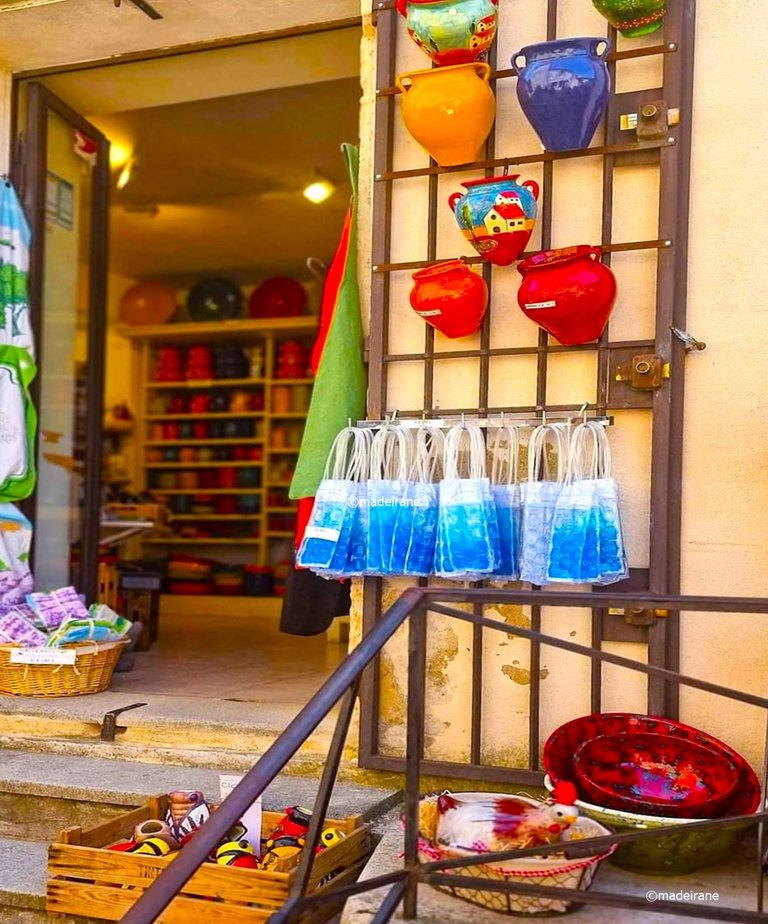
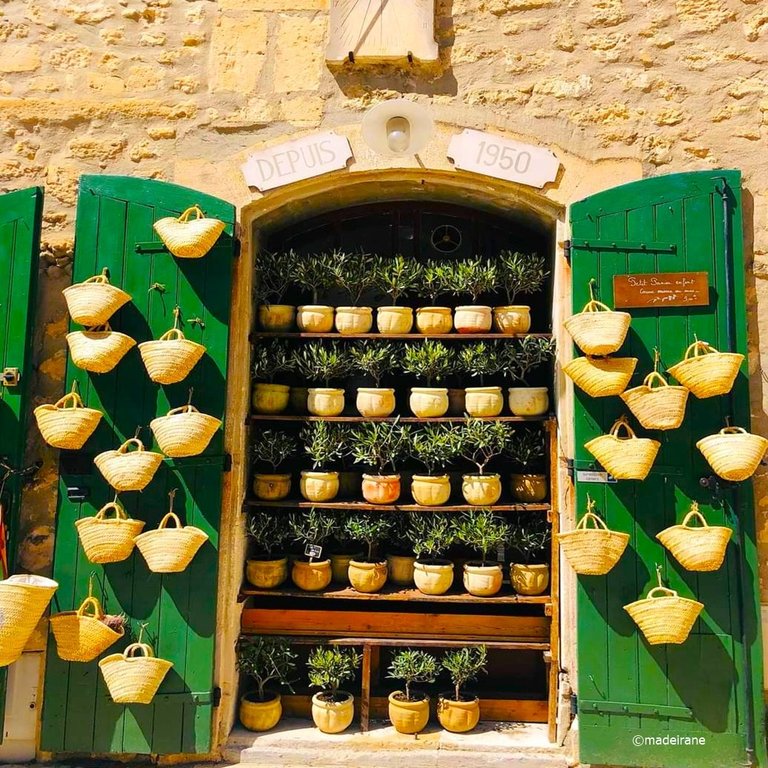

We slowly move up - towards the former castle. The streets and nooks and crannies of Les Baux are a close interweaving of painting and poetry.
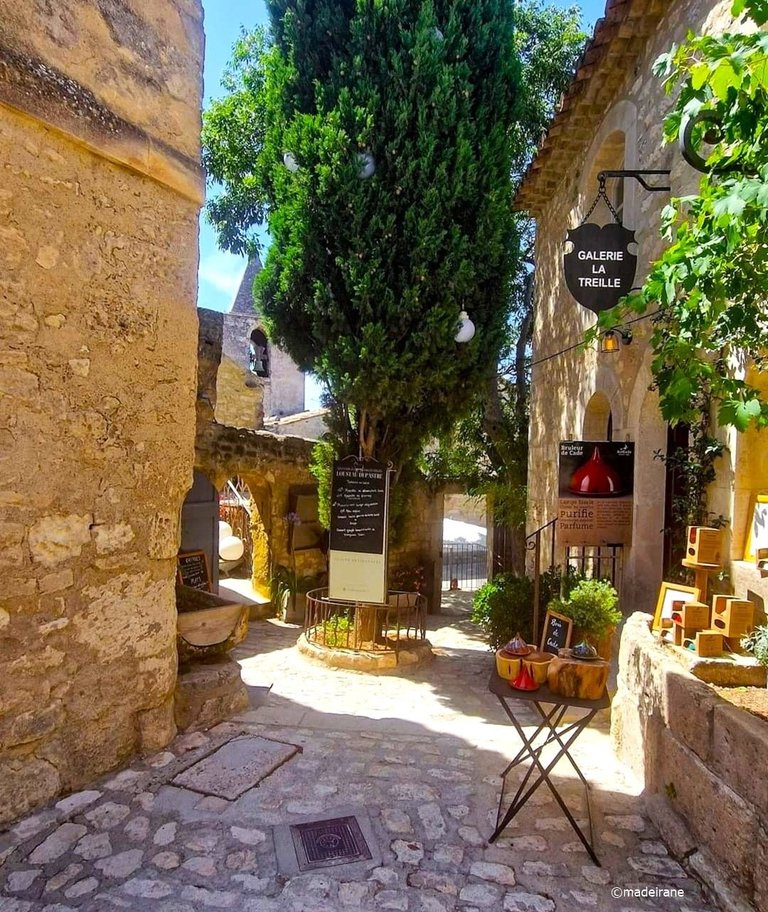
The first attraction we encountered on our way is the ruins of the Brisson-Peyre mansion, built in the 70s of the 16th century in the Renaissance style. Above his window is inscribed the Latin saying - “After darkness there is light.” It would later become the motto of Calvinism, and, in particular, would be carved on the wall of the Reformers in Geneva. Well, it will simply “go to the masses” - like a beautiful slogan.
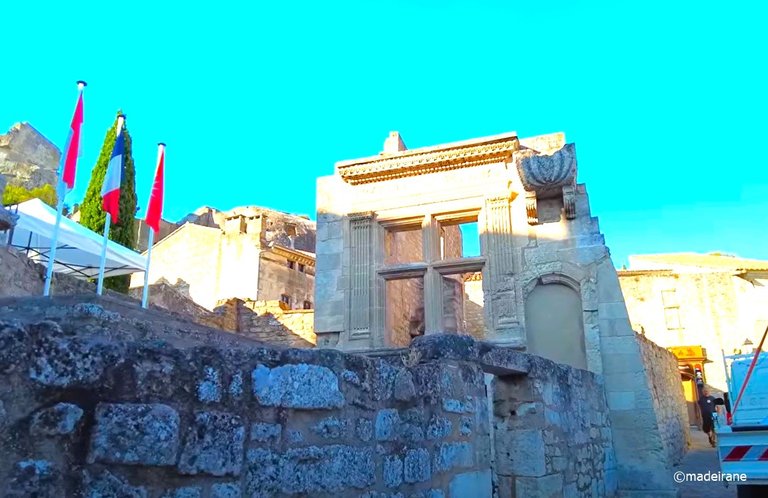
How many art objects - extravagant, funny, shocking - are placed on the streets and in the museums of Les Baux! Another interesting architectural monument of the Renaissance is the former mansion of Manville.
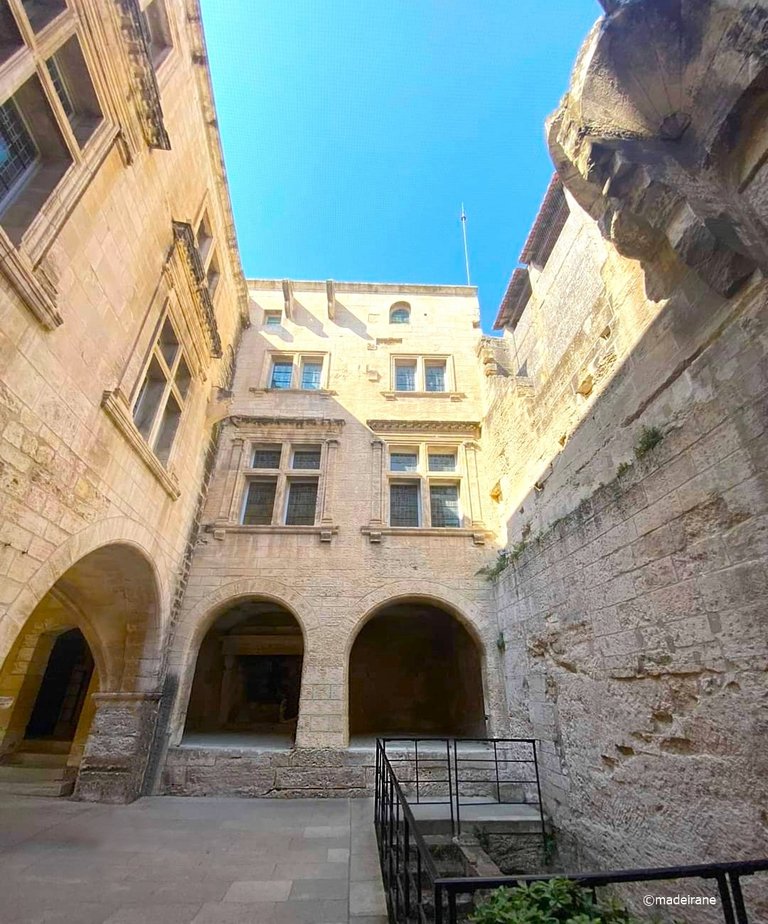
The further you go, the more picturesque and picturesque it becomes. Five minutes - and we are already near the castle. Just outside the entrance to the castle stands the chapel of Saint-Blaise, dating back to the 12th century. A small, but, in my opinion, noteworthy example of the Romanesque style.
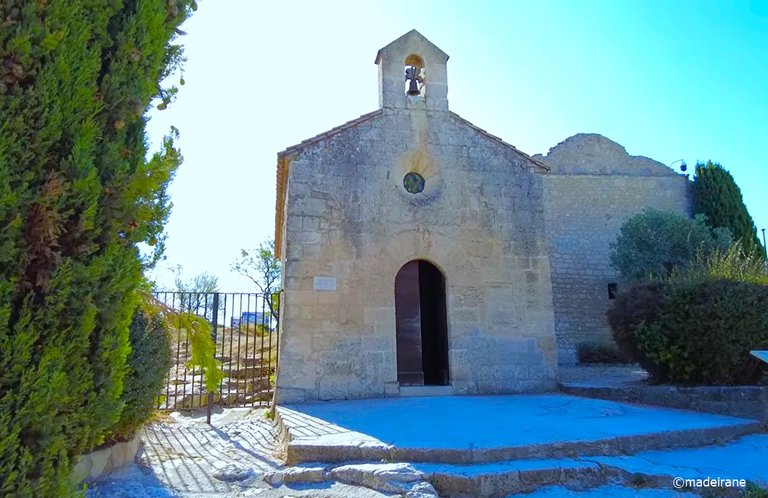
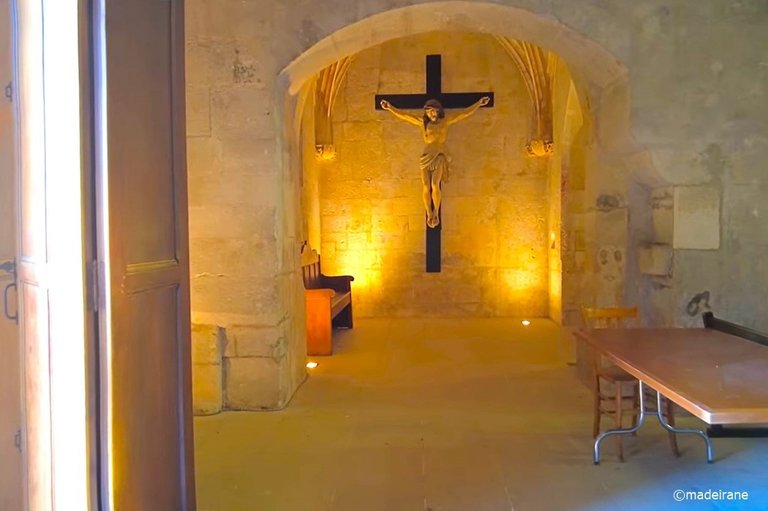
The Les Baux Castle deserves a separate post from me.
Having seen enough cover versions of medieval militarism, we headed to a small but very pleasant museum, which I initially positioned as a must-see object. The road to the museum presented us with a new portion of Provençal flavor. The museum I was so eager to visit is called the Santon Museum. I note that they do not charge any fee for visiting.
Unfortunately, the photos were taken through the glass of the showcase, so the quality is not good.
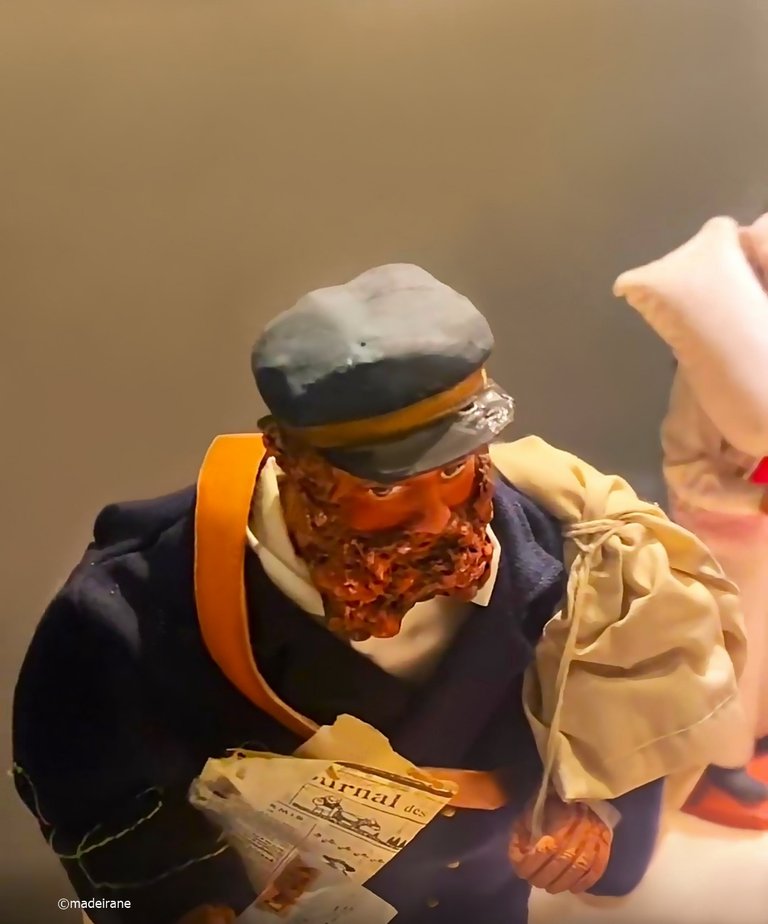
Santons are made from baked red clay and are either painted wholly with paints, or only the face is painted and dressed in cloth clothes. The sizes of santon range from 3 to 30 cm. Santons are among the most popular souvenirs of Provence. You can buy them not only in Les Baux, but also beyond. Prices for dolls, of course, cannot be called symbolic.
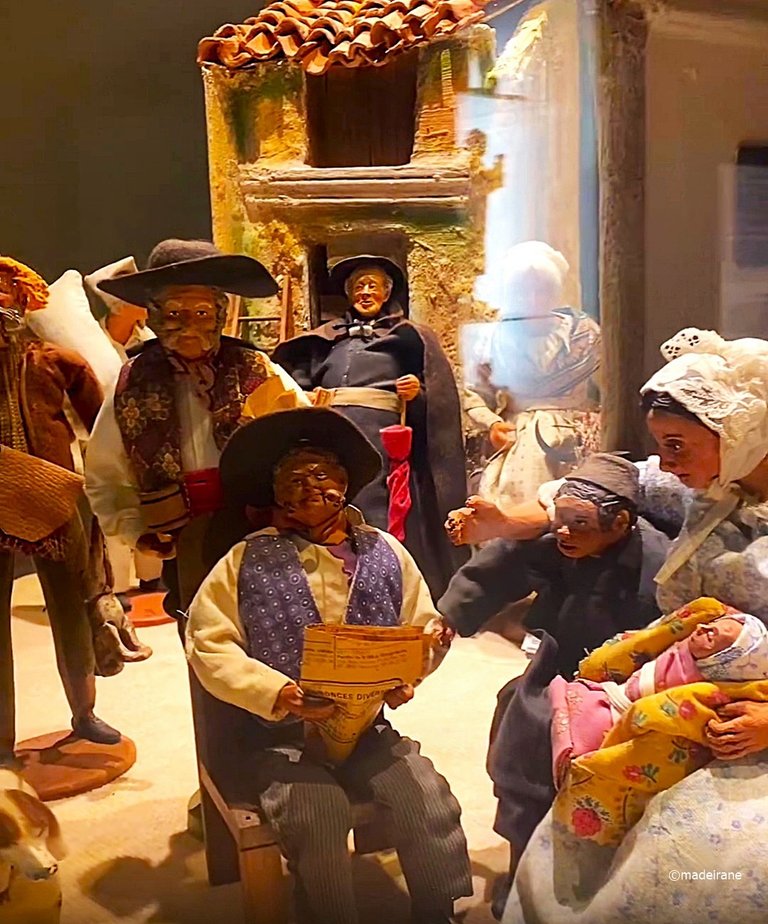
The tradition of making santon originated in the 19th century and was borrowed from Italy. However, the Italians developed a similar craft back in the 12th century. Therefore, santons made in Naples are also presented in museum showcases. The plaques below them indicate a solid date - the 18th century.
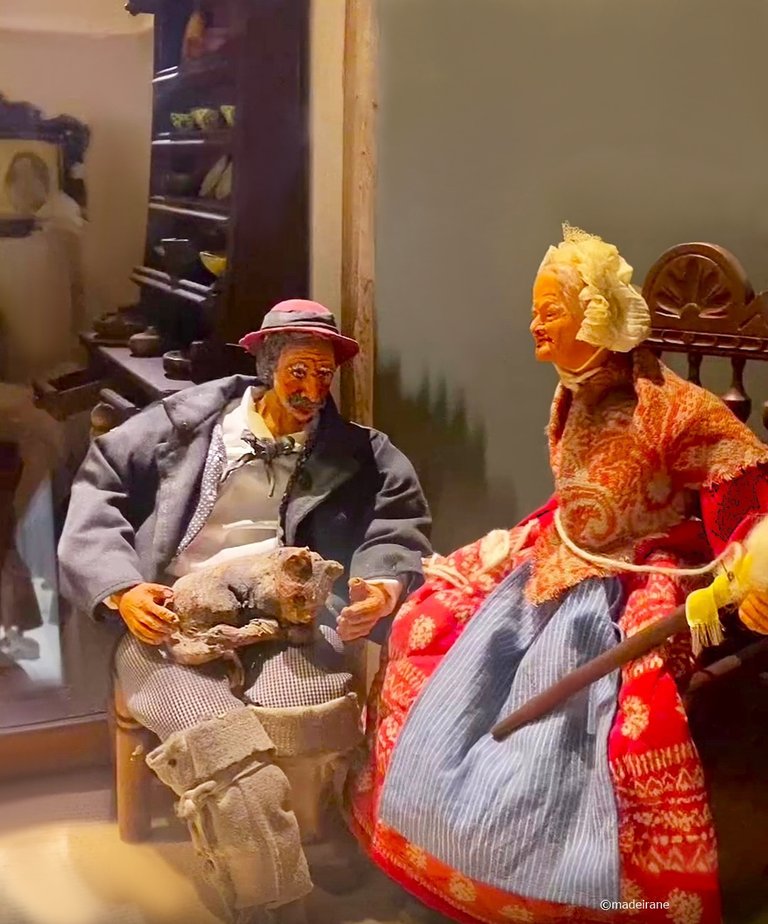
And although some of the figures had cracked faces, lost fingers, and frayed clothes, I could not help but admire the polish of each image. Before us stood almost all living people with easily guessable characters.
The museum exhibits not only individual dolls, but also the nativity scenes themselves. As you can see, not only the Magi came to worship the infant Christ, but also the entire Provençal village - from young to old.
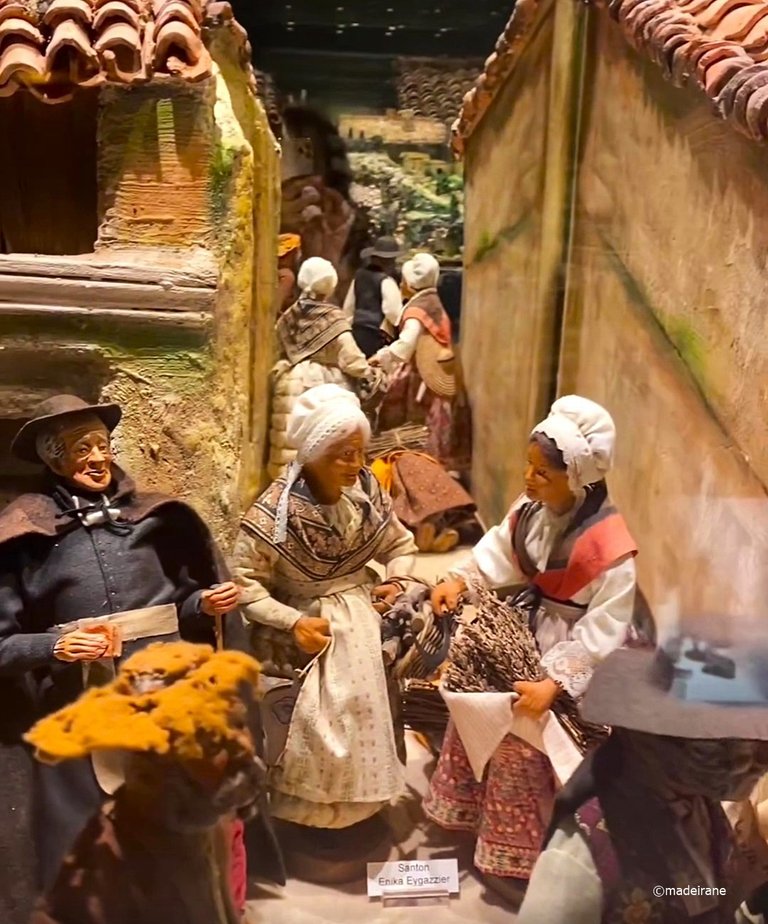
As I already said, today the city lives off tourism. And therefore, the city has a very well-developed infrastructure, from hotels and restaurants to all kinds of shops with souvenirs.
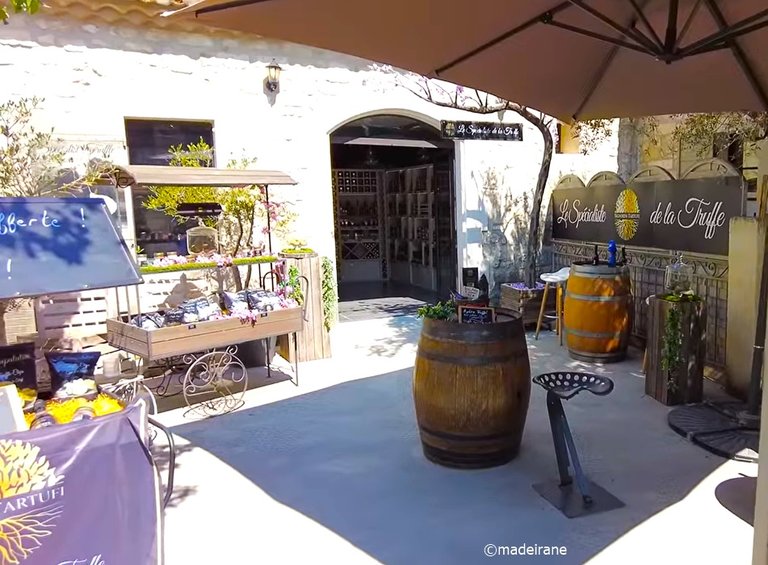
It was interesting to walk around the old medieval town, but modern signs and the very vibrant life on the streets of the city prevented me from immersing myself in the time when the streets were born. Now this antiquity is put up for sale here. And I didn't like it very much. Although, of course, the town itself is very nice.
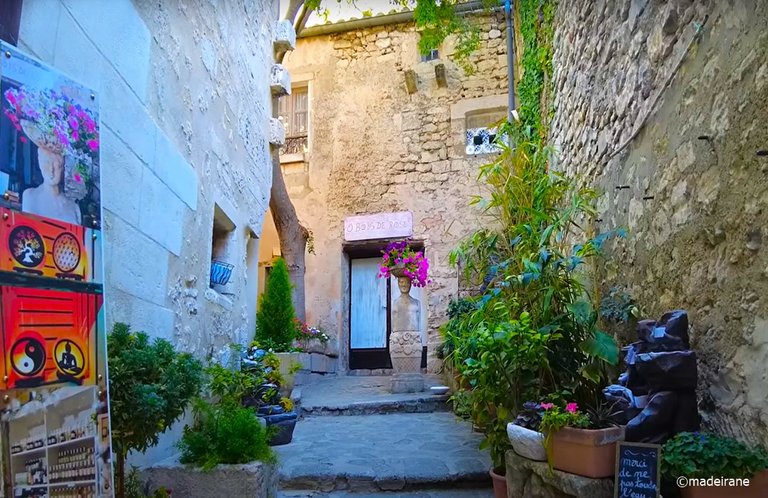
Of course, the narrow gray streets, which are paved with stone and the same old houses attract tourists. Main square, church, chapel, observation deck and free art gallery...
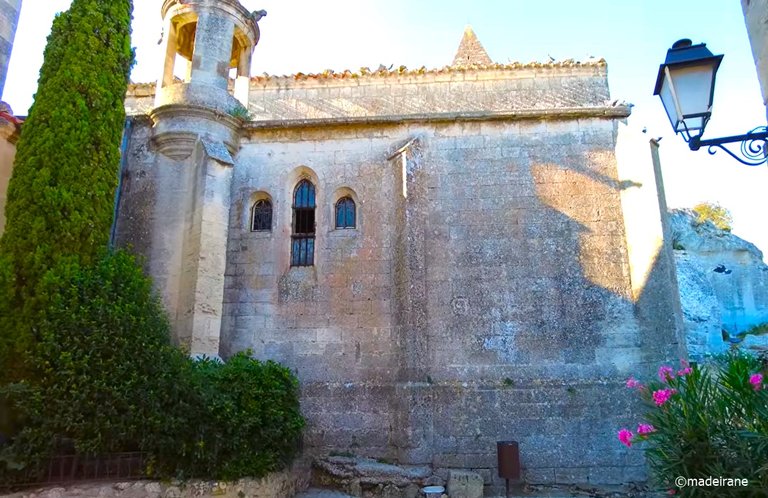
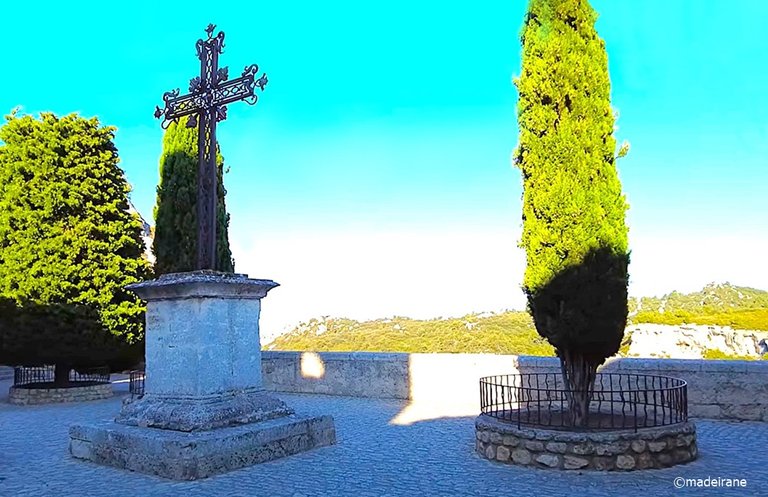
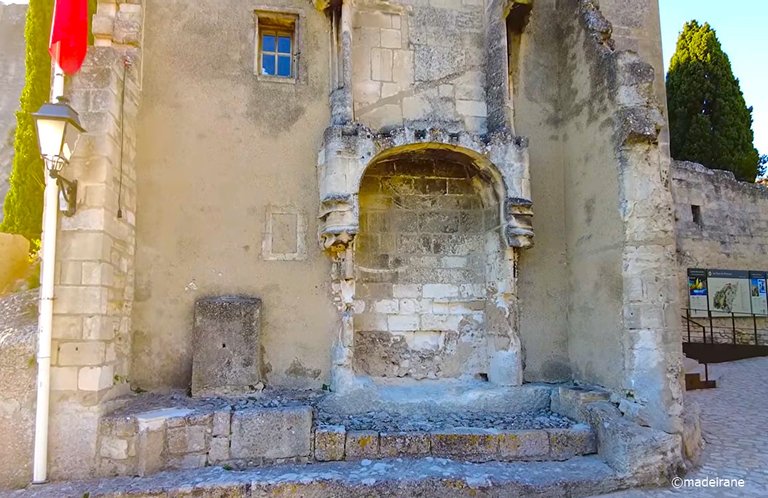
The covered galleries and houses are made from large stone blocks that were quarried nearby, just about a couple of kilometers from this place. Everything is done thoroughly, in the complete absence of any decorative elements, with a minimum number of windows. I think there are several reasons here: to provide coolness on a hot day, and warmth when the very strong local wind blows.

No matter how many different towns I visit, I can say that after visiting those very similar to each other towns, they turn out to be completely different cities, and they all have their own individual atmosphere. Likewise, the town of Les Baux de Provence has its own unique and interesting atmosphere.
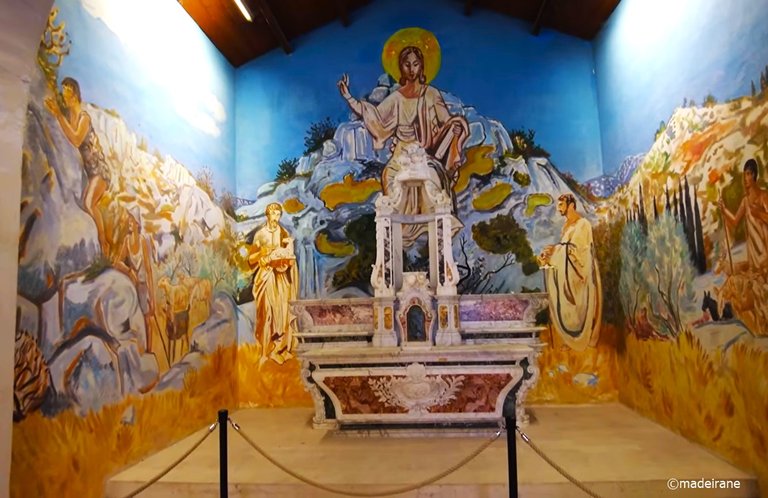
💝💝💝💝💝💝💝💝💝💝
With love, @madeirane
Photos are taken by me.
© 2024
Translated from Lithuanian with DeepL.com (free version)
Provansas mane sužavėjo daugeliu dalykų, įskaitant uolose augančius miestelius ir kaimus. Vienas iš tokių miestelių yra Les Baux de Provence, trumpiau - Le Baux, esantis už 32 km į pietus nuo Avinjono.
Ir nors puikiai žinojau, kad Les Baux de Provence iš esmės yra „negyvas“ geografinis Prancūzijos žemėlapio taškas, aktyviai išnaudojamas turizmo versle, nesusimąstydamas įtraukiau šią vietą į kelionės programą.
Į Les Baux de Provence mus su vyru patraukė įdomi šio viduramžių miesto vaiduoklio istorija, brutalūs jo citadelės griuvėsiai ir, žinoma, gamta - nerūpestingai išmėtyta keistų formų baltų akmenų juosta, prasiveržianti pro pliušinį žalumos kilimą. Jų neįprastą, hipnotizuojančią formą maždaug prieš tūkstantį metų sukūrė skulptorius, vardu Erosionas.
Kaip ir visi šio regiono viduramžių miestai, miestas buvo įkurtas ant kalno pastačius pilį. O pati pilis buvo įkurta gerokai anksčiau nei 981 m., tačiau būtent šiais metais datuojamas pirmasis jos paminėjimas oficialiuose dokumentuose. Virš šios kalkakmenio uolos keteros išdidžiai stūkso XI a. siaurame žemės ruože vietos lordui Baux pastatyta tvirtovė-legenda.
Vėliavos su de Bo dinastijos herbu - 16 baltų žvaigždžių raudoname lauke - liudijo, kad mes su vyru nesuklydome nurodydami adresą. Žvaigždė - tai užuomina apie jų kilmę, kurią jie kukliai ir skoningai vedė iš paties Baltazaro - vieno iš burtininkų, atėjusių pagarbinti kūdikėlio Jėzaus.
Šiandien Les Baux de Provanso miestas ir Le Baux pilis yra viena iš pagrindinių šių vietų lankytinų vietų. Ir tai labai populiari turistų lankoma vieta. Tai supratome pirmą kartą priartėję prie miesto.
Kaip ir visiems tiems, kurie į Les Baux de Provence atvyksta automobiliu, mums buvo aktualus automobilių stovėjimo aikštelės klausimas. Už automobilių stovėjimą mokama vienoda paros kaina. Atskira nemokama stovėjimo aikštelė skirta neįgaliems vairuotojams. Turėkite omenyje, kad automobilių stovėjimo automatas nepriima banknotų: jis veikia tik su monetomis ir banko kortelėmis.
Les Baux vadinamas miestu vaiduokliu. Iš tiesų visi atvykstame į mirusį miestą, į muziejų po atviru dangumi, kuriame įrengtos parduotuvės ir prekystaliai su valgomais ir nevalgomais suvenyrais, kavinės, restoranai ir kiti turistams skirti prekybos ir paslaugų elementai.
Pamažu judame aukštyn - buvusios pilies link. Les Baux gatvelėse ir užkampiuose glaudžiai persipina tapyba ir poezija.
Pirmoji lankytina vieta, su kuria susidūrėme pakeliui, yra Brisson-Peyre dvaro, pastatyto XVI a. 7-ajame dešimtmetyje renesanso stiliumi, griuvėsiai. Virš jo lango iškaltas lotyniškas posakis: „Po tamsos yra šviesa“. Vėliau jis taps kalvinizmo šūkiu, o ypač bus iškaltas ant Ženevos reformatorių sienos. Ką gi, jis tiesiog „eis į mases“ - kaip gražus šūkis.
Kiek daug meno objektų - ekstravagantiškų, juokingų, šokiruojančių - išdėliota Les Baux gatvėse ir muziejuose! Kitas įdomus renesanso architektūros paminklas - buvęs Manvilio dvaras.
Kuo toliau, tuo miestelis darosi vaizdingesnis ir vaizdingesnis. Penkios minutės - ir mes jau netoli pilies. Prie pat įėjimo į pilį stovi XII a. pastatyta Saint-Blaise koplyčia. Nedidelis, bet, mano nuomone, vertas dėmesio romaninio stiliaus pavyzdys.
Les Baux pilis nusipelno atskiro mano įrašo.
Pamatę pakankamai viduramžių militarizmo viršelių versijų, nuvykome į nedidelį, bet labai malonų muziejų, kurį iš pradžių pozicionavau kaip privalomą aplankyti objektą. Kelias į muziejų mums pateikė naują Provanso skonio porciją. Muziejus, kurį taip troškau aplankyti, vadinasi Santono muziejus. Atkreipiau dėmesį, kad už apsilankymą jame neimamas joks mokestis.
Santonai gaminami iš išdegto raudono molio ir yra ištisai nudažyti dažais arba nudažomas tik veidas ir aprengiami medžiaginiais drabužiais. Santonai būna nuo 3 iki 30 cm dydžio. Santonai yra vienas populiariausių Provanso suvenyrų. Jų galima įsigyti ne tik Les Baux, bet ir už jo ribų. Lėlių kainų, žinoma, negalima vadinti simbolinėmis.
Santonų gaminimo tradicija atsirado XIX a. ir buvo pasiskolinta iš Italijos. Tačiau italai panašų amatą išvystė dar XII amžiuje. Todėl Neapolyje pagamintos santonos pristatomos ir muziejų vitrinose. Po jais esančios lentelės nurodo tvirtą datą - XVIII amžių.
Ir nors kai kurių figūrų veidai buvo įtrūkę, nuskilę pirštai ir nutrinti drabužiai, negalėjau nesižavėti kiekvieno atvaizdo detalumu. Prieš mus stovėjo beveik visi gyvi žmonės su lengvai atspėjamais charakteriais.
Muziejuje eksponuojamos ne tik atskiros lėlės, bet ir pačios prakartėlės. Kaip matote, pagarbinti kūdikėlio Kristaus atėjo ne tik išminčiai, bet ir visas Provanso kaimas - nuo mažo iki seno.
Kaip jau minėjau, šiandien miestas gyvena iš turizmo. Ir todėl mieste labai gerai išvystyta infrastruktūra: nuo viešbučių ir restoranų iki įvairiausių suvenyrų parduotuvių.
Buvo įdomu pasivaikščioti po senąjį viduramžių miestą, tačiau šiuolaikiniai ženklai ir labai intensyvus gyvenimas miesto gatvėse neleido man pasinerti į tuos laikus, kai gimė gatvės. Dabar ši senovė čia išstatyta pardavimui. Ir man tai nelabai patiko. Nors, žinoma, pats miestas labai gražus.
Žinoma, siauros pilkos gatvelės, grįstos akmenimis, ir tie patys seni namai traukia turistus. Pagrindinė aikštė, bažnyčia, koplyčia, apžvalgos aikštelė ir nemokama meno galerija...
Dengtos galerijos ir namai pastatyti iš didelių akmens luitų, kurie buvo iškasti netoliese, vos už poros kilometrų nuo šios vietos. Viskas padaryta kruopščiai, visiškai be jokių dekoratyvinių elementų, su minimaliu langų skaičiumi. Manau, kad tam yra kelios priežastys: kad karštą dieną būtų vėsu, o pučiant labai stipriam vietos vėjui - šilta.
Kad ir kiek skirtingų miestų aplankyčiau, galiu pasakyti, kad aplankius labai panašius vienas į kitą miestus, paaiškėja, kad tai visiškai skirtingi miestai, ir visi jie turi savo individualią atmosferą. Panašiai ir Les Baux de Provence miestelis turi savo unikalią ir įdomią atmosferą.
Provence it's one of the most charming regions in France in my opinion 💞💞
Congratulations, your post has been added to WorldMapPin! 🎉
Did you know you have your own profile map?
And every post has their own map too!
Want to have your post on the map too?
Sending you an Ecency curation vote
Please vote for the Ecency Proposal.
https://ecency.com/proposals?filter=team

Wow, what a beautiful place, spectacular photos. Thanks for sharing 😃